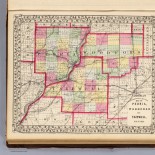Twenty-Fifth Sunday in Ordinary Time by Ted Wolgamot, Psy.D
TWENTY-FIFTH SUNDAY IN ORDINARY TIME
“Taking a child, he placed it in their midst, and putting his arms around it …” Mk, 9, 36
We humans crave power.
All of us do. We love titles and awards, and sitting at the head table, and getting to rub elbows with the “It” crowd, and showing off our latest upscale acquisition, and having influence with those who have status, and being the first to share the latest gossip, and bragging about our child being the smartest in the class, and having the most “likes” on Facebook.
The disciples of Jesus were no different. They even went so far as to argue among themselves about who among them “was the greatest.” Who had the power? Who was the top dog? Who had the inside skinny with Jesus?
In all fairness to them, the households in which people at that time were raised were entrenched in a hierarchy of power that was distinguished by gender, class, and age. Slaves were at the very bottom of the power ladder – followed only by the most socially inferior group of all: children.
Children were invisible, unnoticed. They counted for nothing.
Knowing this, imagine the uproar and the shock when Jesus officially answers the disciples’ question by telling them: the prize for the “greatest among you” goes to … a child!!
A child?
The least noticeable, the least important now becomes the standard for who is the greatest among us?
That’s almost as daring as when Jesus healed a leper – the major societal outcast. That’s almost as outrageous as when Jesus allowed a woman to wash his feet and dry them with her hair.
Once again, Jesus not only rocks the boat, he sinks it. He upsets the very structure of their society. He turns everything upside down and inside out. And he’s still doing it to this day.
But, as if this weren’t enough, Jesus goes a step further. To make the invisible ones even more visible, and to make sure no one misses the point, he uses an unmistakable audio-visual: he takes a child and, “putting his arms around it,” dramatizes the heart-felt meaning of his message.
This, he’s telling us in no uncertain terms, is what true power and true authority looks like: service. Service to the most vulnerable. Service to the most invisible. Service to the weakest.
If you want to be truly great, and truly powerful, and truly number one in my Kingdom, Jesus is telling us today, then use this child as your model. Serve. Don’t “lord it over.” Serve. Don’t abuse or exploit or take advantage. Serve.
This then brings us to present day society. Sadly, we are still challenged by this gospel in terms of our contemporary treatment of children. They certainly have more rights than they did in first century Palestine. They are unquestionably more cherished and honored and noticed by their parents and society than ever before.
And yet, more than 3 million cases of child abuse are reported each year in the United States. Every 2 hours a child is a homicide victim.Every 4 hours a child commits suicide. Childhood exploitation for forced labor and prostitution is a worldwide problem. The trafficking of children, for example, has become a 9.5 billion dollar business annually.
Children are always vulnerable and easily exploited. And the reason remains the same: power is misused for personal gain. As the old saying goes: “Power corrupts, and absolute power corrupts absolutely.”
Jesus offers a remedy: turn power into service. Make the last the first.
Imagine a world that did that!
Ted Wolgamot, Psy.D.
11809194.1
9/16/15
NOTE: For any who might be interested, here are a few books I read this summer and would highly recommend:
Between the World and Me, by Ta-Nahisi Coates
Powerful book written in the form of a letter from a father to his son. Coates writes about his experience of being a black man in America. This book has received rave reviews for his attempt to answer the question “What is it like to inhabit a black body and find a way to live within it?”
The Sixth Extinction, by Elizabeth Kolbert
A highly regarded science writer, Ms. Kolbert won a Pulitzer prize for this book which presents a comprehensive history of the earth’s previous five mass extinctions, and how the present one we’re involved in now is the first caused by human beings.
Sapiens: A Brief History of Humankind, by Yuval Noah Harari
Professor Harari integrates history and science “to challenge everything we thought we knew about being human: our thoughts, our actions, our heritage … and our future.” Fascinating read!
The Boys in the Boat, by Daniel James Brown
A gift from my friend, David Muchow, this book thrillingly tells the story of the epic quest for gold at the 1936 Berlin Olympics. “This riveting tale of beating the odds … at the 1936 Olympics is a rousing story of American can-do-ism. It’s also a portrait of the nine boys who first rowed together for the University of Washington, and of the one in particular who made the sport his family and his home.” I loved this quote from the book: “It’s a great art is rowing. It’s the finest art there is. It’s a symphony of motion. And when you’re rowing well, why it’s nearing perfection. And when you near perfection, you’re touching the Divine. It touches the you of yous. Which is your soul.” All I can say is: Thanks, Dave. I hope to always keep my “swing.”
The Francis Miracle: Inside the Transformation of the Pope and the Church,by John Allen.
Just in time for the Pope’s visit to America, Allen, perhaps the most respected journalist covering the Vatican, provides a thorough review of Francis’ personal journey, as well as an inside report on the inner workings of the Vatican. A great read!
